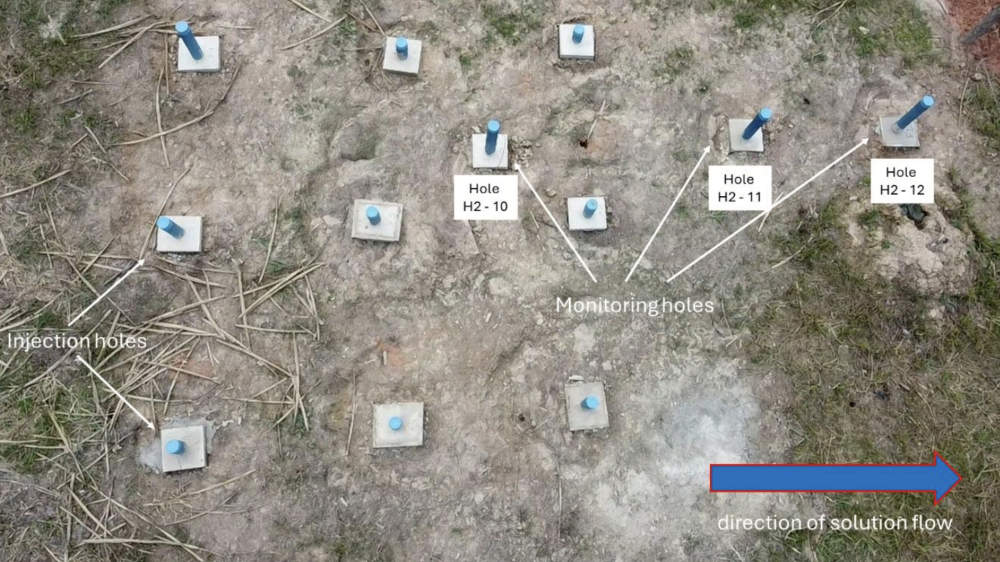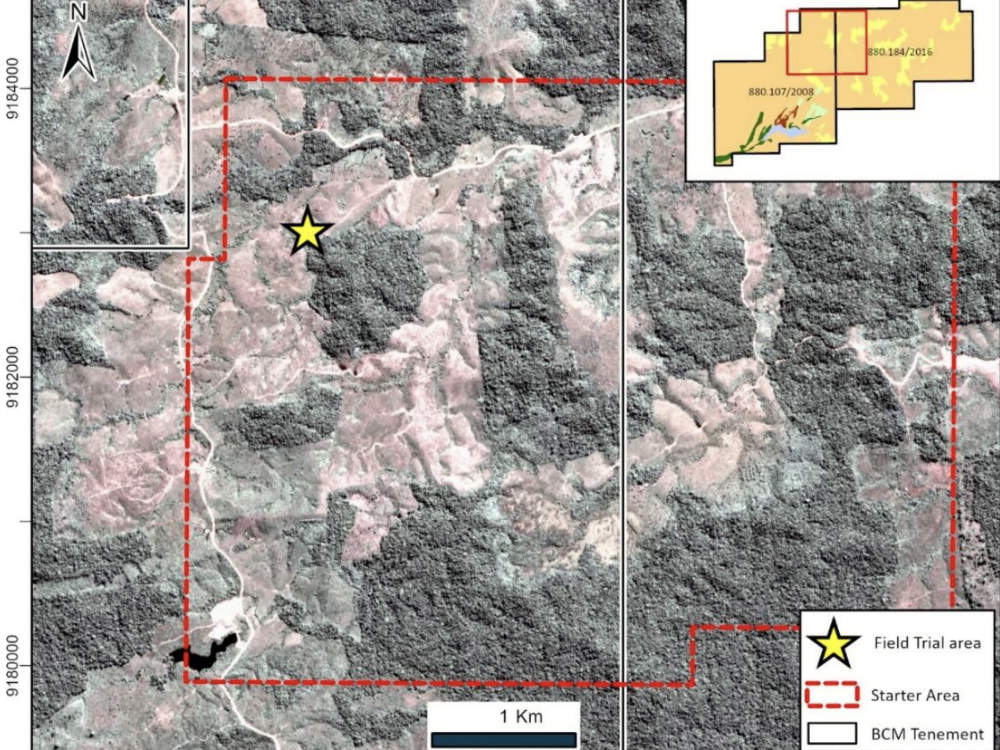Brazilian Critical Minerals’ Ema ISR trial ticks more boxes with magnesium sulphate recorded

Brazilian Critical Minerals has recorded magnesium sulphate in multiple extraction holes with the solution now at the pH level needed to leach REEs. Pic: Getty Images
- Brazilian Critical Minerals records magnesium sulphate in multiple extraction holes at Ema ISR trial
- This was accompanied by a reduction in pH levels to 4.0 or lower, the level needed to leach REEs into solution
- Solution levels have also continued to rise, indicating the bedrock is impermeable – a key condition for successful ISR
Special Report: Brazilian Critical Minerals has received a clear sign the in-situ recovery trial at its Ema rare earths project is progressing as planned with the tracer reagent magnesium sulphate recorded in multiple extraction holes.
This is a clear indication that the chemical, which is a far more environmentally friendly alternative to ammonium sulphate for leaching rare earths, has migrated from the injection holes to the extraction holes in the field trial locations.
Brazilian Critical Minerals (ASX:BCM) added that pH levels had reduced significantly to at or below pH 4.0 in the extraction solution with the addition of low concentration magnesium sulphate.
Not only is the solution at the pH level required to leach REEs into solution via in-situ recovery, the solution flows through the clay zones also continue to exceed laboratory estimates with injection and extraction wells showing a steady rise in solution levels over time indicating the basement rock is largely impermeable.
Solutions containing REEs have now been extracted from the monitoring holes and are enroute to the laboratory for certified analysis.
“Over the past 10 days, we’ve successfully applied the same testing protocols to the Ema mineralisation that delivered exceptional laboratory results throughout 2024 and early 2025,” managing director Andrew Reid said.

“Encouragingly, the pilot field trial has confirmed that permeability rates are not only consistent with lab data but, in many cases, even better.
“In recent days, we’ve also achieved a significant technical milestone — lowering the in-situ pH to levels that demonstrate clear migration of magnesium sulphate through the clay layers to the extraction wells.
“This is a critical step, as it indicates rare earth elements are now at a stage where they can be effectively ionically leached into solution.”
He added that the WSP Brazil controlled and supervised independent field trial had further validated the company’s confidence in the simplicity and effectiveness of the ISR process at Ema.
“The mineralisation continues to demonstrate strong resilience and the ease with which we’ve been able to advance this low-impact extraction method is a key de-risking milestone.
“We believe these developments represent a major step forward in unlocking the full potential of the Ema project.”

Clay permeability
BCM had drilled a series of injection and extraction/monitoring holes at site location 2 to determine the time taken for solution to percolate through the clay horizon.
This found that the time required for the solution to be recorded in the monitoring holes was in direct proportion to their distance from the injection well and suggested that fluids were percolating strongly through the clay horizon.
Information captured by this trial will be collated and used for hydrogeological modelling as part of the upcoming bankable feasibility study and as part of the company’s environmental permitting application that is directed by CERN.
The company added that the consistent upward trend in solution levels observed across the first 100 hours of injection indicated full in-situ saturation of the clays, retention of solution within the mineralised zone and minimal solution loss.
This is attributed to the impermeable nature of the underlying fresh bedrock.
Notably, these trends have been observed consistently across the entire trial area to date, confirming a key condition for the successful deployment of ISR.
Ema hosts one of the world’s largest ionic clay rare earth deposits with a resource of 943Mt at 716 parts per million total rare earth oxides.
It includes a starter zone of 341Mt with high-value magnet rare earths, used to make permanent magnets for advanced technology like electric vehicle batteries, wind turbines and particle accelerators.
A scoping study completed in March 2025 had outlined a post-tax net present value of US$498 million for the Ema project, with an internal rate of return of 55% and a payback period of about two years on capex of just US$55m.
This article was developed in collaboration with Brazilian Critical Minerals, a Stockhead advertiser at the time of publishing.
This article does not constitute financial product advice. You should consider obtaining independent advice before making any financial decisions.
Related Topics

UNLOCK INSIGHTS
Discover the untold stories of emerging ASX stocks.
Daily news and expert analysis, it's free to subscribe.
By proceeding, you confirm you understand that we handle personal information in accordance with our Privacy Policy.








